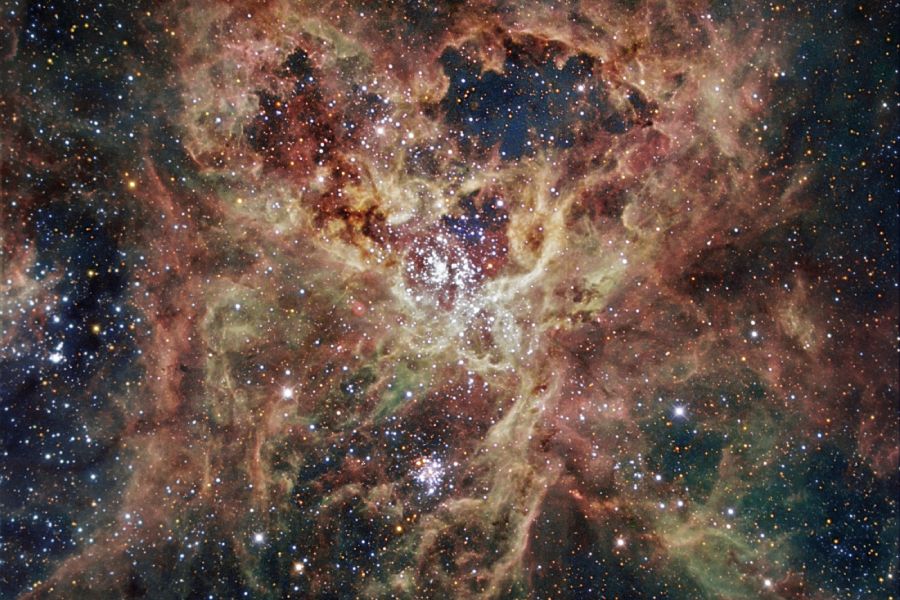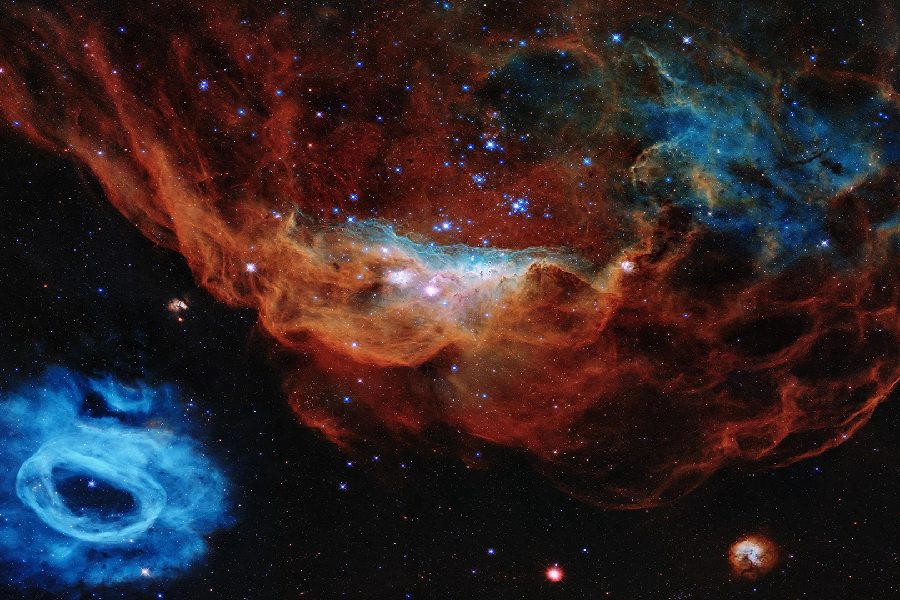Our galaxy is brimming with countless stunning Nebulae. Some dwarf entire solar systems, while others are behemoths spanning hundreds of light years. But what is the biggest nebula identified out there in space?
In this article, we’ll highlight some record-setting stellar nurseries and remnants that are in the run for the biggest nebula. We’ll take a tour from nebulae larger than our entire Milky Way galaxy to those simply gigantic in our galactic neighborhood.
Along the way, we’ll uncover what makes each a top candidate in the race to be crowned the prestigious biggest nebula. Advanced telescopes have allowed us to probe their massive structures and dimensions. The current front runners represent some of the most voluminous and expansive nebula structures known.
Pushing the limits of galactic proportions, the quest to determine the biggest nebula uncovers these masterpieces sculpted by stars across the cosmos.

What Is the Biggest Nebula?
The biggest nebula known to us is the Tarantula Nebula, also called 30 Doradus. It resides in the Large Magellanic Cloud, a neighboring galaxy of the Milky Way.
Stretching over 600 light-years across, it’s a hub of star formation, boasting thousands of young, hot stars. This massive nebula captivates astronomers with its immense size and bustling activity. Its presence in the night sky stands as a testament to the wonder and complexity of the Universe.
List of Largest Nebulae
Other Notable Giant Nebulae
- Eta Carinae Nebula (NGC 3372) –located in the Carina constellation, this massive nebula is known for the star system Eta Carinae, one of the most massive binary systems known. It contains large regions of ionized gas and dark dust clouds.
- Orion Nebula (M42/M43) – situated in the Orion constellation, the Orion Nebula is a well-known stellar nursery. It is a diffuse nebula where new stars are actively forming, and it is easily visible to the naked eye as the “middle star” in Orion’s sword.
- North America Nebula (NGC 7000) – this emission nebula in the constellation Cygnus got its name due to its resemblance to the continent of North America. It is a large, faint nebula illuminated by a nearby open star cluster.
- Pelican Nebula (IC 5070) – adjacent to the North America Nebula, the Pelican Nebula is another H II region. Its shape resembles a pelican, with a “head” and “neck” region, formed by the interplay of gas and young stars.
- Veil Nebula (Cygnus Loop) –the Veil Nebula is a supernova remnant in the constellation Cygnus. It is the visible portion of the Cygnus Loop, formed by the shockwave from a supernova explosion thousands of years ago.
The Largest Known Nebula: The Tarantula Nebula
The Tarantula Nebula amazes astronomers as the largest and brightest nebula in the Local Group of nearby galaxies, spanning over 1,000 light-years across. Its huge size and intense radiation from young massive stars only contribute to its grandeur.
In fact, the Tarantula likely claims the title of the most spectacular nebula found in the local Universe thus far. Astronomers focus attention on the Tarantula not just for its record giant size but also for the insights it offers into star and planet formation through its composition and structure.
The Tarantula Nebula facts reveal this stellar nursery to be unrivaled in scale and activity among known nebulas. Astronomers also focus on its energetic stellar nurseries fueling substantial massive star birth within nebular cavities and ridges.
These impressive attributes make the Tarantula Nebula an ideal target to study the upper extremes of star formation and test theories on what conditions can power exceptionally brilliant stellar clusters. Analysis of its prolific regions informs our overall understanding.

Location and Size
The Tarantula Nebula lies about 170,000 light years distant within the Large Magellanic Cloud. A small satellite galaxy orbiting our much bigger Milky Way’s outskirts. This makes the Tarantula our closest galactic neighbor, where we can observe processes generating extremely massive stars up close.
Indeed, the Tarantula amazes us with its vast spatial scale. Spanning over 1,000 light-years end-to-end—several times exceeding the Orion Nebula’s size. Given detection limits, it ranks among the very largest nebula structures discovered so far.
Significantly bigger than most in the Milky Way, this grants an unmatched observational window into nebula mechanics powering prolific massive star birth.
The Tarantula has an epic hundred light year-wide stellar factories. These factories inform our overall understanding of activities occurring within extragalactic nebulae.
Formation and Structure
The Tarantula Nebula formed from the remnants of previous massive stars that shed winds and exploded as supernovae. Their explosions compressed surrounding gas into molecular clouds, which then collapsed to birth new stars.
This created the Nebula’s central cavity, illuminated by hot young stars that erode the surrounding gas pillars. The Tarantula reveals extremely complex structural layers riddled with cavities carved by stellar radiation and winds.
Within these nested shells, we witness the next generations of stars forming inside sequential star formation regions. The interplay of bright young stars and darker nebulosity makes the Tarantula seem to “breathe” over time.
We can observe the cycles of turbulent massive star creation, disruption, and rebirth across its sprawling breadth in the nebulae resembling a spider web. The name – Tarantula Nebula comes from the appearance of its dusty filaments in previous telescope images.
Components of the Tarantula Nebula
The Tarantula Nebula contains numerous dusty pillars and long dark filaments composed of molecular gas tracing intricate fine structures. Hot ionized hydrogen gas fills the central 170-light year-wide bubble cavity. Cleared out by massive stars and reaching temperatures exceeding millions of degrees.
The nebula’s crowded hub contains extremely massive young stars over 100 times heavier than our Sun clustered tightly together. Their powerful stellar winds disturb the region crowded with stellar nurseries birthing the next star generation.
Weighing over a million solar masses combined. The incredibly bright Hodge 301 star cluster unleashes intense radiation while blowing a superbubble void amid nebula materials.
At least three titanic superbubbles carved by past supernovae shockwaves and massive star winds structure the nebula. These complex nested layers showcase the dynamic interplay between stars and gas in starburst regions.
Conclusion
New technology now enables observing extraordinarily massive structures, addressing the question – what is the biggest nebula?
From the Tarantula Nebula’s vast star-forming regions to supernova remnants spanning 40 light years across, improved observations have revealed some of the largest known nebulae illuminated by galaxies’ most brilliant stars.
We hope you can better appreciate both the visual grandeur and extreme physics involved in forming these giants that compete to be the biggest observable nebula. Examining top contender nebulae for the title helps elucidate details of star birth while expanding our conception of gigantic dimensions possible.
This article aimed to showcase these peak celestial structures, even as astronomy progresses toward determining which awe-inspiring nebulae qualify as categorically the very largest.
